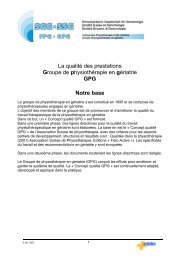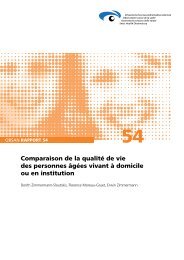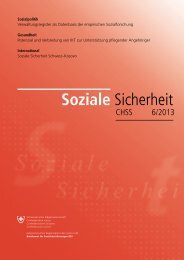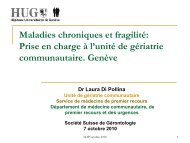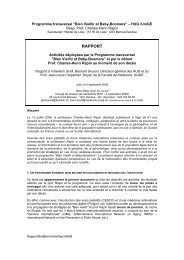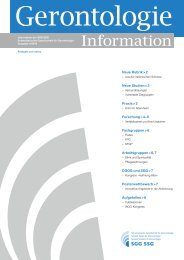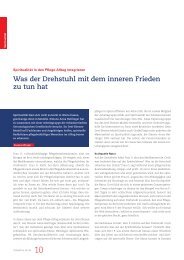Palliative care for older people - World Health Organization ...
Palliative care for older people - World Health Organization ...
Palliative care for older people - World Health Organization ...
Create successful ePaper yourself
Turn your PDF publications into a flip-book with our unique Google optimized e-Paper software.
(Box 12.2). Several drugs can often be discontinuedwithout significant effects on mortality, morbidityand the quality of life (Box 12.3) (7,8). A majorbarrier to improving palliative <strong>care</strong> in some countriesis the unavailability of opioids. This is a particularproblem in some countries in the eastern part of theWHO European Region (9).The use of multiple medications among <strong>older</strong><strong>people</strong> has increased the rate of drug interactionsand hospitalization secondary to drug-relatedproblems. Polypharmacy means that more drugsare prescribed than clinically indicated (8) or allprescribed medications are clinically indicated butthere are too many to take. This can potentiallycause a higher incidence of adverse drug reactions.The clinical and financial effects of this are enormousand still insufficiently studied.Increasing age among <strong>older</strong> <strong>people</strong> and advancedand terminal disease are associated with changesin pharmacokinetics and pharmacodynamics.Appropriate prescribing in this age group and/orcondition can be problematic. This is also an area inwhich interface, skills exchange and collaborationbetween specialties may be beneficial in addressingproblems and may be necessary.© Joan TenoBox 12.2. Controlling symptoms of terminal heart failure among very old <strong>people</strong>The Galliera Hospital in Genoa, Italy has introduced a palliative approach to caring <strong>for</strong> <strong>people</strong> with terminalheart failure in their unit <strong>for</strong> acute <strong>care</strong> <strong>for</strong> <strong>older</strong> <strong>people</strong>. The median age of the <strong>people</strong> residing in the unitis close to 90 years, and they generally have severe comorbidity and communication problems. Most havedistressing symptoms in the terminal phase: breathlessness, agitation, death rattle, pain, nausea and vomiting.Most symptomatic patients have access to treatment on low-dose morphine (less than 20 mg per day onaverage) in combination with other medication (haloperidol, metoclopramide and scopolamine butylbromide).In the terminal phase, one third of the residents are severely distressed and agitated. They receive a slightincrease in palliative drug dosages and/or low-dose midazolam <strong>for</strong> effective relief or sedation. This approachachieves acceptable symptom control in the dying process <strong>for</strong> <strong>older</strong> <strong>people</strong> with heart failure.Source: personal communication, Vito Curiale, Galliera Hospital, Genoa, Italy.39




